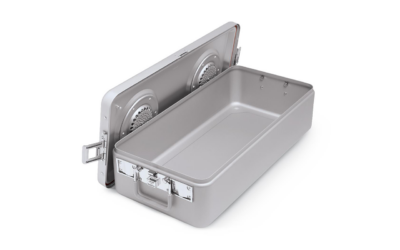Reducing skin flora on both the patient’s skin and clinicians’ hands prior to surgery is a key measure in preventing surgical site infections and the associated economic burden, according to AORN. The CDC’s hand hygiene guideline recommends, “surgical hand antisepsis using either an antimicrobial soap or an alcohol-based hand rub” before donning gloves.
AORN conducted a literature review to examine available empirical evidence related to intraoperative prep agents used for open abdominal, general surgery procedures including povidone-iodine, chlorhexidine gluconate, parachoroxylenol, and iodine povacrylex in 74% isopropyl alcohol. “Intraoperative surgical skin prep studies were limited in providing empirical evidence to support one superior prep agent,” according to the literature review. “Factors to consider when choosing an appropriate intraoperative skin prep agent include contraindications, environmental risks, the patient’s allergies and skin condition, the surgical site, the manufacturer recommendations for the prep agent, and surgeon preference.”
The market for skin prep products is growing. In 2009, the disinfectant and antiseptic market was worth around $3.4 billion, but by 2010 had grown over 12 percent, to reach a value of $3.8 billion, according to a new report available from companiesandmarkets.com. Market growth has accelerated in recent years following large-scale outbreaks of several infectious diseases, such as MRSA, avian and swine flu.
The global antiseptics and disinfectants market in 2009 was at about $3.4 billion, and with a 12 percent increase, sales reached about $3.8 billion in 2010. The market is expected to rise at a compound annual growth rate (CAGR) of 11.1 percent and reach $7.1 billion by 2016.
The U.S. constituted approximately 41 percent of the total antiseptics and disinfectants market in 2010 and was around $1.5 billion. The U.S. market is expected to increase to nearly $2.9 billion by 2016, growing 11 percent each year. The European market is expected to grow at about the same rate.
Though the market is growing, most pre-operative skin prepping products on the market today have been commercially available for some time. Rather than investing in new product development, many manufacturers have focused on building a body of evidence supporting the use of these products in the OR through clinical documentation, according to DeAnn Hammer, Market Development Manager for 3M Infection Prevention. “Clinicians striving to impact patient outcomes while simplifying their processes have been discussing the need to standardize on a surgical prepping product,” Hammer says. “The concern of this trend is that today, no manufacturer offers a product which does not have limitations due to its formulation.
Surgical factors, patient variables and application compliance/time can impact which surgical patient prep may be the right product selection for a specific patient,” she says.









